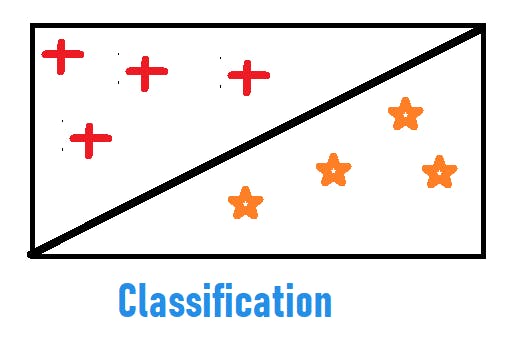Now a days I am learning Machine Learning and love to share what I learned.
Introduction
Machine learning (ML) is a type of artificial intelligence (AI) that allows software applications to become efficient at solving problems without being explicitly programmed to do so.
Simple Program VS ML Program
Simple Program
It's a software program that takes an input let says X perform task as per program pre-define instructions and produces a output let says Y
Machine Learning Program
It's a software program that takes an input (X) and output (Y) data both and produces patterns. These patterns are result of ML algorithms.
Types of Conventional Learning
There are 3 basic types of learning.
- Supervise Learning
- Unsupervised Learning
- Semi-supervise Learning
Supervised Learning
It is machine learning technique in which we pass labeled data to machine learning model.
Labeled data is a group of data samples tagged with one or more meaningful labels. It's also called annotated data, and its labels identify specific characteristics, properties, classifications, or contained objects.
If data already have output, it is supervised Learning
The input and output data both are known while the model used is unknown.
This technique is used to predict next output, based on input data (containing input and output)
Machine learning algorithm itself find the best suited modelf(x) of X and Y
Y= f(x)
Examples of Supervised Learning
Regression: It is algorithm of prediction. It predicts continuous responses. Example of regression includes predict price of financial assets, electricity load forecasting
Classification: we have to identify objects; it is a discrete prediction. Examples identify handwriting recognition.

Unsupervised Learning
It is machine learning technique in which we pass unlabeled data to machine learning model.
In unsupervised learning we have input (X) but no output.
Examples of unsupervised Learning
- Clustering: grouping.
Semi-supervised Learning
This technique has labeled and unlabeled both form of data. We convert unlabeled to labeled first.
Steps to apply ML to any problem
STEP 1 - Problem Nature Identification: Identification of problem nature is first and most important task. We have to identify is the problem lies in type of clustering, classification, regression or some other.
Classification: Data is labelled that is it is assigned a class, Example spam/non-spam or fraud/non-fraud. The decision being modelled is to assign labels to new unlabeled pieces of data. This can be thought of as a discrimination problem, modelling the differences or similarities between groups.
Regression: Data is labelled with a real value (think floating point) rather than a label. Examples that are easy to understand are time series data like the price of a stock over time, The decision being modelled is what value to predict for new unpredicted data.
Clustering: Data is not labelled but can be divided into groups based on similarity and other measures of natural structure in the data. An example from the above list would be organizing pictures by faces without names, where the human user has to assign names to groups, like iPhoto on the Mac.
STEP 2- Training Data Collection: Next, we have to train our collected data. Collection of good data is most important task. We have to look into all the features of data. If all the data we have are somehow similar with other, that means we didn't have good data yet. Scattered data is good one.
Without high quality data, even the most efficient ML algorithm can be failed. Only if the algorithm is fed with good training data can it easily pick up the features and find relationships that it needs to predict down the line. If you introduce the machine learning (ML) algorithms to the right data, you're setting them up for accuracy and success.
- STEP 3- Selecting the Right Model:
In next step we have to which machine learning model best suits out problem solution. Sometimes it could be application of one or more algorithms worked together to solve problem.
STEP 4- Evalution of Model: After choosing model it is important to evaluate is the chosen model is right or wrong. If we get out Evalution less, then we need to re-work on our algorithm.
E =P - P^
P= predicted value P^= previous predicted value
STEP 5- Deploy
Deploying an machine learning algo mean make it available on public sites like GitHub so that people can use your algorithm to solve their problems and can apply your model to their dataset.
Buy me a coffee

